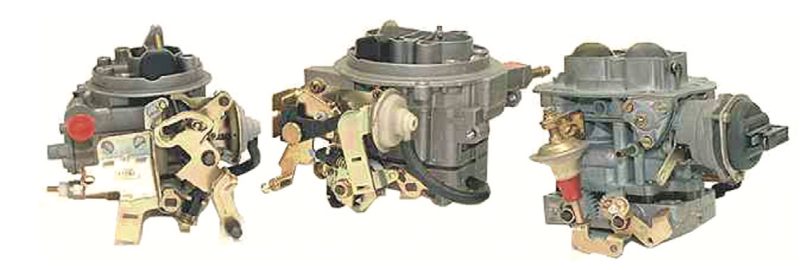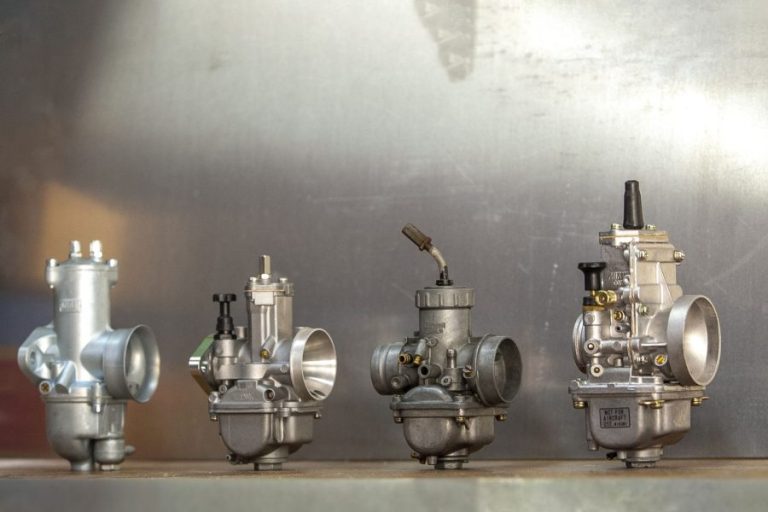Carburettors are an integral component of any gasoline-powered internal combustion engine. Their primary function is to mix the fuel and air in the correct ratio before it enters the engine. One type of carburettor that has been widely used in high-performance applications is the choke carburettor, which comes in two configurations: single-choke and twin-choke.
Single-choke carburettors have a single venturi, or choke, through which the air and fuel mixture passes. The choke itself is a narrow tube that narrows down the airflow and causes a venturi effect, which draws fuel into the airstream. This type of carburettor is typically used on smaller, less powerful engines, as the single choke limits the amount of air and fuel that can flow into the engine.
Twin-choke carburettors, on the other hand, have two venturis, which allows for a greater volume of air and fuel to flow into the engine. The two chokes are usually arranged side-by-side and are connected by a bridge, which helps to stabilize the airflow and maintain a consistent fuel mixture. This type of carburettor is commonly found on high-performance engines, as it can provide a greater volume of fuel and air than a single-choke carburettor.
There are several advantages to using a twin-choke carburettor over a single-choke carburettor. Firstly, the twin-choke carburettor provides a greater volume of fuel and air, which can result in increased engine power and performance. Secondly, the twin-choke design allows for greater flexibility in tuning the carburettor, as each choke can be adjusted independently to achieve the desired air and fuel mixture. Finally, the twin-choke design is generally more reliable than a single-choke design, as it is less susceptible to clogging or blockages.
There are also some disadvantages to using a twin-choke carburettor. Firstly, the twin-choke design is more complex than a single-choke design, which can make it more difficult to tune and maintain. Secondly, the twin-choke carburettor is typically more expensive than a single-choke carburettor, which can make it less accessible for budget-conscious enthusiasts. Finally, the twin-choke carburettor may not be suitable for all types of engines, as it may provide too much fuel and air for smaller or less powerful engines.
In conclusion, the choice between a single-choke and twin-choke carburettor will depend on the specific requirements of your engine. If you have a smaller or less powerful engine, a single-choke carburettor may be sufficient. However, if you have a high-performance engine and require greater fuel and air flow, a twin-choke carburettor may be the better option. Whichever option you choose, it is important to ensure that the carburettor is tuned correctly to achieve optimal performance and reliability.

To understand the differences between these two carburettor designs, it’s important to first understand how a carburettor works. A carburettor’s primary function is to mix the correct amount of fuel and air in a precise ratio, which is then sent to the engine’s combustion chamber. In a gasoline engine, this mixture is ignited by a spark plug, which causes an explosion that drives the pistons and creates power.
A carburettor achieves this mixing of fuel and air by using a venturi. A venturi is a narrow section of the carburettor’s body that causes the air flowing through it to speed up, creating a low-pressure area. This low-pressure area then draws fuel into the airstream, which mixes with the air to create the correct fuel-to-air ratio.
In a single-choke carburettor, there is only one venturi, which restricts the flow of air and fuel into the engine. This makes a single-choke carburettor best suited for smaller engines, where the limited airflow is not a significant hindrance to performance.
In contrast, twin-choke carburettors have two venturis, which allow for greater airflow and fuel flow. The two venturis are typically side-by-side and are connected by a bridge, which helps to stabilize the airflow and maintain a consistent fuel mixture. The twin-choke design allows for greater fuel and air flow, making it better suited for high-performance engines that require more fuel and air to achieve maximum power output.
Tuning a carburettor correctly is crucial to achieving optimal performance and reliability. This involves adjusting the carburettor’s various settings to ensure that the fuel-to-air ratio is correct at all engine speeds and loads. Tuning a twin-choke carburettor can be more complex than a single-choke carburettor due to its more complex design and greater number of adjustment points.
One key advantage of twin-choke carburettors is their flexibility in tuning. Each choke can be adjusted independently to fine-tune the fuel and air mixture, allowing for greater precision in achieving the desired performance characteristics. This can be particularly beneficial in high-performance applications, where a small adjustment can make a significant difference in power output.
However, twin-choke carburettors are typically more expensive than single-choke carburettors due to their more complex design and greater number of components. They may also be more difficult to maintain and repair, as there are more components that can potentially fail or become clogged with dirt or debris.
In summary, the choice between a single-choke and twin-choke carburettor will depend on the specific requirements of your engine. A single-choke carburettor is best suited for smaller engines or applications where airflow is less of a concern. A twin-choke carburettor is better suited for high-performance engines that require greater fuel and air flow, but may be more complex to tune and maintain. Ultimately, the right choice will depend on your specific engine and performance goals.
Advantages of Single-Choke Carburettors:
- Simpler Design: Single-choke carburettors have a simpler design compared to twin-choke carburettors, which makes them easier to maintain and repair.
- Fuel Efficiency: Since single-choke carburettors restrict airflow, they can result in better fuel efficiency by providing a more precise fuel-to-air ratio.
- Lower Cost: Single-choke carburettors are generally less expensive than twin-choke carburettors.
Disadvantages of Single-Choke Carburettors:
- Limited Performance: Due to the restricted airflow, single-choke carburettors can limit the performance of high-performance engines.
- Less Precise Tuning: Single-choke carburettors have fewer tuning options, which can make it more difficult to fine-tune the fuel-to-air ratio.
Advantages of Twin-Choke Carburettors:
- Improved Performance: Twin-choke carburettors can provide greater airflow and fuel flow, which can result in improved performance for high-performance engines.
- Greater Tuning Flexibility: Twin-choke carburettors have more tuning options, which makes it easier to fine-tune the fuel-to-air ratio and achieve optimal performance.
- Better Response: Twin-choke carburettors can provide better throttle response due to the greater airflow and fuel flow.
Disadvantages of Twin-Choke Carburettors:
- Higher Cost: Twin-choke carburettors are generally more expensive than single-choke carburettors due to their more complex design.
- More Complex Tuning: The greater number of adjustment points on twin-choke carburettors can make them more difficult to tune and maintain.
- Potentially Higher Fuel Consumption: Due to the greater airflow and fuel flow, twin-choke carburettors can result in higher fuel consumption in some cases.
Ultimately, the choice between a single-choke and twin-choke carburettor will depend on the specific requirements of your engine and your performance goals. It’s important to consider the advantages and disadvantages of each option carefully and consult with a professional if you’re unsure which option is right for you.










